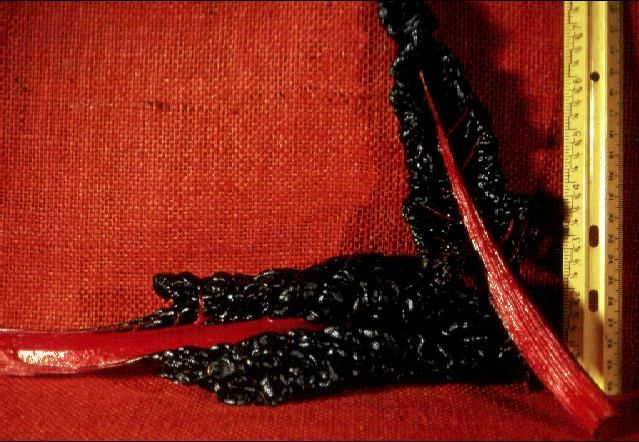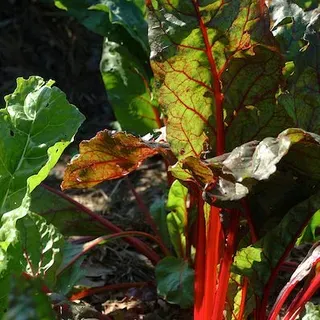Swiss Chard—Beta vulgaris L. (Cicla group)1
Swiss chard belongs to the goosefoot family, Chenopodiaceae. Also known as chard, leaf beet, or spinach beet, Swiss chard lacks the fleshy root of the garden beet. Its large, glossy, dark green leaves are borne on fleshy leafstalks that are white or red, depending on variety. Chard is commonly found in gardens throughout Florida both as a winter vegetable, since it is a cool season crop, and as a summer cooking green, since it also tolerates heat very well.

Credit: Blue Goose, Inc.
Culture
Chard may be seeded directly in the garden or transplanted from a seedbed or from one point in the row to another. Plants are spaced about 6 to 12 inches apart.
Most gardeners find chard easy to grow. Some even grow it as a border plant around buildings because of its attractive foliage. In plots where beet tops were almost destroyed by chewing insects, chard was only lightly attacked. However, root-knot nematodes often are a problem.
Use
The succulent, glossy, dark green leaves, which are usually slightly crinkled or savoyed, are eaten as cooking greens. Sometimes the fleshy white leaf midribs are separated from the leaf blade and prepared much like celery or asparagus. Chard is ready to eat 50–60 days from seeding.
Favorite varieties are 'Lucullus' and 'Fordhook Giant,' which are green-leaved, and 'Rhubarb,' which has red leaves.



